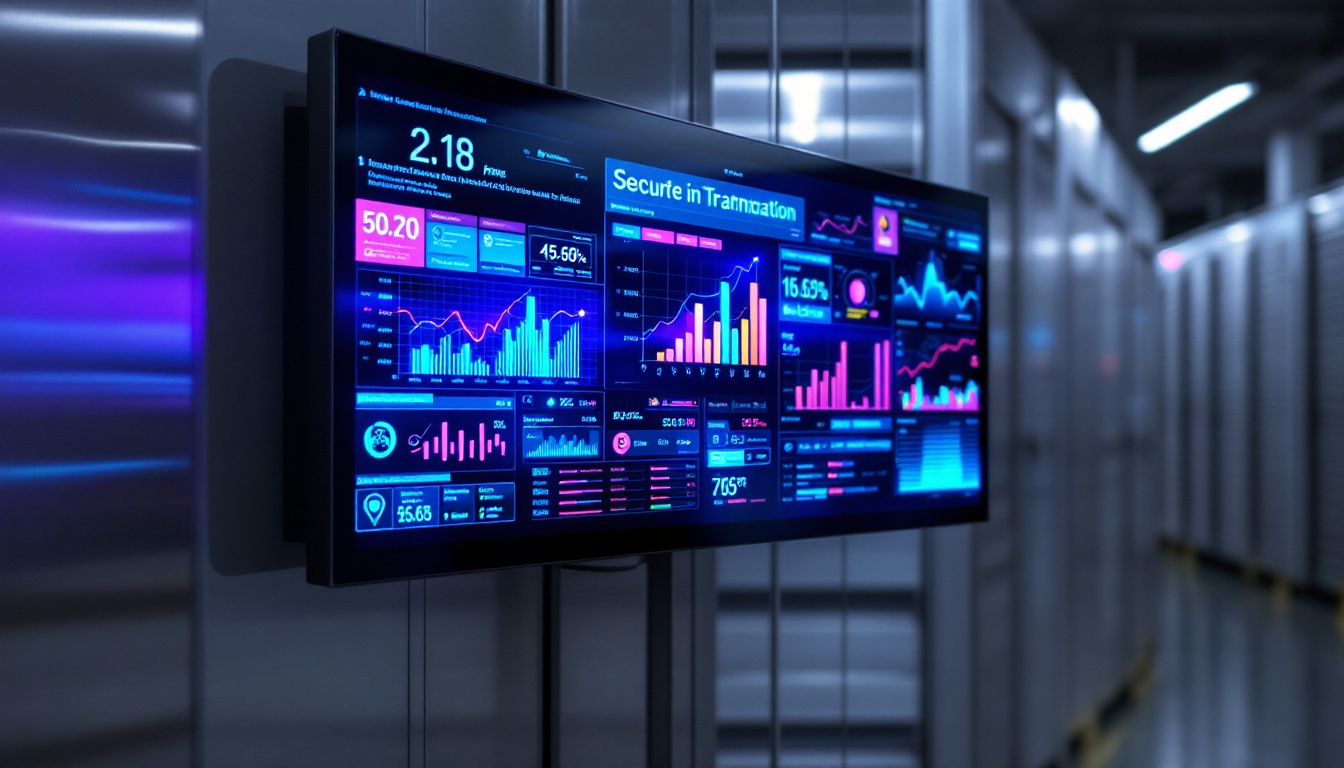In the rapidly evolving landscape of retail, supermarkets are increasingly adopting innovative technologies to enhance customer experience and streamline operations. One such advancement is the use of digital price displays, particularly LED displays. These electronic price tags are transforming the way supermarkets communicate pricing and product information to consumers. This article delves into the workings, benefits, and future of digital price displays in supermarkets.
Understanding Digital Price Displays
Digital price displays are electronic tags that show product prices and information in real-time. Unlike traditional paper price tags, these displays are powered by LED technology, which provides bright, clear visuals that can be easily read from a distance. The integration of digital price displays is becoming a standard feature in modern supermarkets, offering a range of advantages over conventional pricing methods. Not only do they enhance the shopping experience by providing instant access to pricing information, but they also contribute to operational efficiencies by reducing the labor required for price updates.
How Digital Price Displays Work
At the core of digital price displays is a sophisticated system that includes hardware and software components. The hardware typically consists of LED screens, communication devices, and a central control unit. The software is responsible for managing the content displayed on each screen and ensuring that pricing information is updated in real-time. This seamless integration of technology allows supermarkets to respond quickly to market changes, such as fluctuations in product demand or competitive pricing strategies.
When a price change occurs—whether due to a promotion, seasonal adjustment, or inventory changes—the information is sent from the supermarket’s central database to the individual displays via wireless communication. This allows for instant updates, ensuring that customers always see the most accurate pricing. Furthermore, the ability to schedule updates in advance means that retailers can plan their promotions more effectively, ensuring that the right messages reach customers at the optimal time.
Types of Digital Price Displays
Digital price displays come in various forms, each designed for specific applications within the supermarket environment. Common types include:
- Shelf Edge Displays: These are typically mounted on the edge of shelves and display prices alongside product images. They are ideal for providing immediate pricing information to customers as they shop. The integration of QR codes or NFC technology can further enhance these displays, allowing customers to access additional product details or promotions with a simple scan.
- Promotional Displays: Larger screens that highlight special offers or discounts. These displays are strategically placed to attract customer attention and drive sales. By utilizing dynamic content, such as animations or countdown timers, supermarkets can create a sense of urgency that encourages shoppers to take advantage of limited-time offers.
- Self-Service Kiosks: Interactive displays that allow customers to check prices, find product information, or even complete purchases independently. These kiosks not only empower customers with information but also help reduce congestion at checkout lines, enhancing the overall shopping experience.
In addition to these types, some supermarkets are experimenting with mobile digital price displays that can be moved around the store for special events or seasonal promotions. This flexibility allows retailers to adapt to changing customer flows and highlight specific products based on current trends or inventory levels. As technology continues to evolve, the potential for digital price displays to integrate with other smart systems, such as inventory management and customer relationship management, will only increase, paving the way for even more innovative retail solutions.
Benefits of LED Digital Price Displays
The adoption of LED digital price displays in supermarkets offers numerous benefits that can significantly enhance operational efficiency and customer satisfaction.
Enhanced Accuracy and Efficiency
One of the primary advantages of digital price displays is the accuracy they provide. Manual price updates can lead to errors, resulting in discrepancies between the displayed price and the checkout price. Digital displays eliminate this issue by ensuring that prices are updated in real-time, reducing the risk of customer dissatisfaction and potential loss of sales.
Moreover, the efficiency of updating prices is greatly improved. Instead of requiring staff to manually change each price tag, a single update can be made from a central system, saving time and labor costs.
Additionally, the integration of LED digital price displays with inventory management systems allows for automatic price adjustments based on stock levels or sales trends. This not only streamlines operations but also helps in maintaining optimal pricing strategies. For instance, if a product is nearing its expiration date, the system can automatically lower the price to encourage quicker sales, thus minimizing waste and maximizing profitability.
Improved Customer Experience
Customers today expect a seamless shopping experience. Digital price displays contribute to this by providing clear, easily readable information. The vibrant LED screens attract attention and can display additional information such as product details, nutritional facts, or promotional messages.
Furthermore, the ability to quickly update prices allows supermarkets to respond to market changes, ensuring that customers always receive the best deals. This flexibility can enhance customer loyalty and encourage repeat visits.
In addition to price updates, these displays can also be programmed to showcase seasonal promotions or highlight new product launches, creating a dynamic shopping environment. By utilizing eye-catching graphics and animations, supermarkets can engage customers more effectively, drawing their attention to special offers and driving impulse purchases. This not only enhances the shopping experience but also contributes to increased sales and customer retention.
Challenges and Considerations
While the benefits of digital price displays are significant, there are also challenges and considerations that supermarkets must address when implementing this technology.
Initial Investment and Maintenance Costs
Transitioning to digital price displays requires a substantial initial investment in hardware and software. The cost of LED screens, installation, and the necessary infrastructure can be daunting for some retailers. Additionally, ongoing maintenance and potential software updates may incur further expenses.
However, many supermarkets view this investment as a long-term strategy that can lead to greater savings and improved sales over time. Careful financial planning and analysis can help mitigate the impact of these initial costs.
Training Staff and Integration with Existing Systems
Implementing digital price displays also necessitates training staff to use the new system effectively. Employees must be familiar with the software and hardware to ensure smooth operation and troubleshooting. This training period can temporarily disrupt daily operations, so careful planning is essential.
Moreover, integrating digital price displays with existing inventory management systems can present challenges. Supermarkets need to ensure that the software used for price updates is compatible with their current systems to avoid data discrepancies.
Future Trends in Digital Price Displays
The future of digital price displays in supermarkets is promising, with several trends expected to shape their evolution in the coming years.
Increased Use of Artificial Intelligence
Artificial intelligence (AI) is poised to play a significant role in the future of digital price displays. AI can analyze customer behavior, sales data, and market trends to optimize pricing strategies. This means that prices can be dynamically adjusted based on demand, ensuring that supermarkets remain competitive.
Additionally, AI can enhance the personalization of customer experiences. For instance, displays could show tailored promotions based on a customer’s shopping history or preferences, further engaging shoppers and driving sales.
Integration with Mobile Technology
As smartphones become an integral part of the shopping experience, the integration of digital price displays with mobile technology is likely to increase. Supermarkets may develop apps that allow customers to scan products and receive real-time pricing information directly on their devices.
This technology could also facilitate mobile payments, enabling customers to complete purchases without waiting in line. Such innovations not only enhance convenience but also align with the growing trend of contactless shopping.
Case Studies: Successful Implementations
Several supermarkets around the world have successfully implemented digital price displays, showcasing the potential benefits of this technology.
Case Study: A Leading Grocery Chain
A prominent grocery chain in Europe recently transitioned to digital price displays across all its stores. The supermarket reported a 20% reduction in pricing errors, leading to increased customer satisfaction. Additionally, the time required for price updates was cut by 75%, allowing staff to focus on customer service rather than manual pricing tasks.
The chain also utilized promotional displays to highlight seasonal products, resulting in a 15% increase in sales for featured items. This case illustrates the significant impact that digital price displays can have on operational efficiency and sales growth.
Case Study: An Innovative Supermarket Startup
An innovative startup supermarket in the United States adopted digital price displays as part of its strategy to attract tech-savvy consumers. By leveraging interactive displays, the supermarket provided customers with detailed product information, including sourcing and sustainability practices.
This approach resonated with environmentally conscious shoppers, leading to a rapid increase in customer engagement and loyalty. The startup’s success demonstrates how digital price displays can be used creatively to enhance the overall shopping experience.
Conclusion
Digital price displays are revolutionizing the supermarket industry, offering numerous advantages that enhance both operational efficiency and customer experience. While challenges exist, the potential for improved accuracy, reduced labor costs, and increased customer satisfaction makes this technology an attractive investment for retailers.
As supermarkets continue to evolve, the integration of AI and mobile technology into digital price displays will further enhance their capabilities, making them an essential component of modern retail strategies. By embracing these advancements, supermarkets can not only keep pace with changing consumer expectations but also position themselves for future success in an increasingly competitive marketplace.
Transform Your Supermarket with LumenMatrix LED Displays
Ready to elevate your retail space with the latest in digital price display technology? LumenMatrix is at the forefront of LED display innovation, offering a wide array of solutions that can transform your supermarket into a dynamic and engaging shopping environment. From vibrant Indoor LED Walls to eye-catching Outdoor Displays, and even customizable options to fit your unique needs, LumenMatrix has the tools to enhance your brand visibility and captivate your customers. Don’t miss the opportunity to revolutionize your visual communication strategy. Check out LumenMatrix LED Display Solutions today and step into the future of retail excellence.































